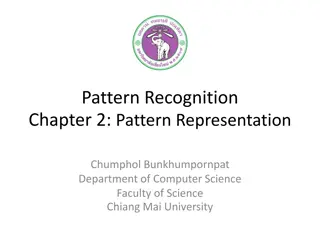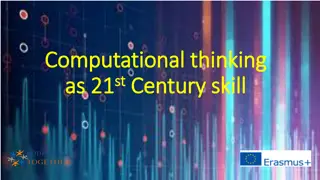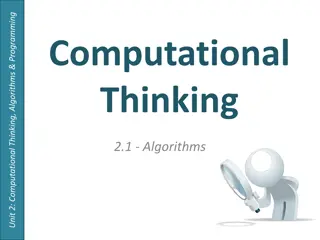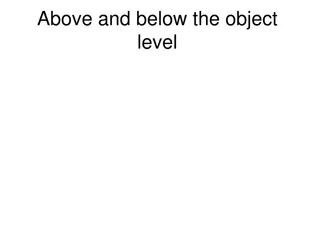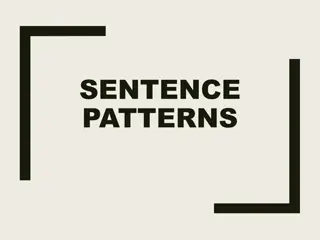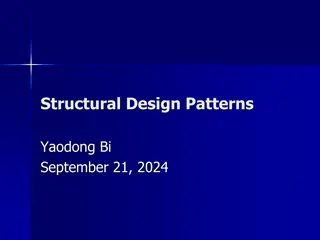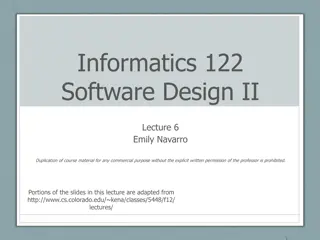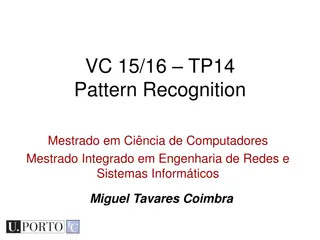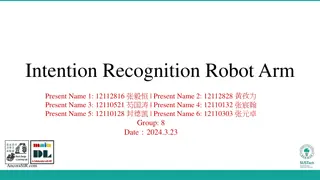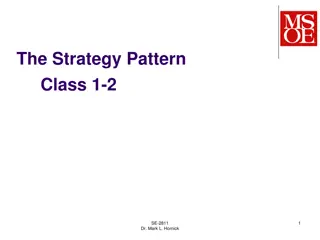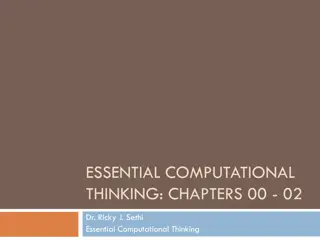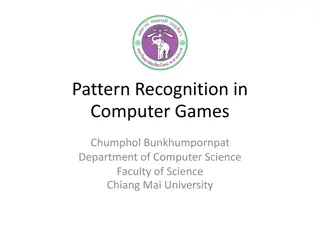Understanding the Importance of Pattern Recognition in Computational Thinking
Pattern recognition is a vital skill in computational thinking, enabling the identification of similarities and differences between concepts and objects. By recognizing patterns, individuals can efficiently solve complex problems, create shortcuts, and avoid duplications in problem-solving processes. This skill plays a key role in problem solving, helping to identify commonalities, find solutions, and apply previously solved strategies to similar problems.
Download Presentation

Please find below an Image/Link to download the presentation.
The content on the website is provided AS IS for your information and personal use only. It may not be sold, licensed, or shared on other websites without obtaining consent from the author. Download presentation by click this link. If you encounter any issues during the download, it is possible that the publisher has removed the file from their server.
E N D
Presentation Transcript
Pattern Pattern Recognition Recognition
Learning Objectives Learning Objectives Pattern recognition Importance of pattern recognition Application of Pattern recognition Practice pattern recognition
Pattern Recognition Pattern Recognition 1 Let's start with an example: Can you identify a pattern in this picture and predict the arrangement of the shapes in the row number 4? 2 3 4
Pattern Recognition Pattern Recognition You might have already guessed the right answer! How did we predict the arrangement? - We observed the similarities and differences between the first three rows and predicted the arrangement (solved the problems based on a developed pattern). What are the observed similarities and differences? Similarities: the unique shapes and colors and direction of the shift (right shift in shapes of every row) Differences: The position of shapes in each row
What is Pattern Recognition What is Pattern Recognition Pattern recognition is the skill of recognizing the similarities and differences between concepts and objects. Pattern recognition is the ability to analyze and identify the shared characteristics between parts of a decomposed problem. (Can we conclude pattern recognition occurs after decomposition?) Pattern recognition is a core computational thinking skill that helps in creating shortcuts to solve complex problems.
More on Pattern Recognition More on Pattern Recognition Pattern recognition is a key skill for problem- solving. It can be applied to identify the commonalities of the problems and finding solutions to address them. In the process of solving a problem, it helps in identifying the solution that can be used again from similar problems that were solved in the past. Pattern recognition helps avoid duplications, and not to reinvent the wheel!
Pattern Recognition in Computational Thinking Pattern Recognition in Computational Thinking Pattern recognition is one of the key components of computational thinking. Patterns help in creating an abstraction of a concept that can be used over and over again without being similar in every instance of the application. We may conclude that pattern recognition goes hand in hand with abstraction (creating an abstraction of the problem and solution to be applied in similar problems/domains in the future).
Similar to other computational thinking skills, we apply pattern recognition in our daily tasks involuntarily and without being conscious of it. Pattern Pattern Recognition in Recognition in Everyday life Everyday life For example: when you drive to a new city you can easily navigate the streets and follow the traffic signs because you have already created a pattern of traffic signs in your mind and can easily apply/map them in different situations. When you learn how to make coffee with one coffee machine, its pattern is developed in your mind and you will know how to make coffee with different brands of coffee machines since you replicate the same pattern in different situations.
Pattern Recognition on Computer Science Pattern Recognition on Computer Science Pattern recognition helps us solve computing problems easily and develop advanced algorithms for complex problems. For example, in programming and software development we create patterns based on the best practices and replicate the style of their architecture for other applications in the same domain (-- design patterns and domain-specific software architecture design). In artificial intelligence, we use pattern recognition to analyze data and identify similarities to recommend an object or content to the end user. For example, Amazon, Netflix, or Facebook recommend items, movies, and friends or events from the patterns they develop based on your interaction history with these systems.
Additional Resources Additional Resources https://youtu.be/SC30MuyK1-8 https://equip.learning.com/pattern-recognition-computational-thinking/ https://medium.com/tech-based-teaching/thinking-in-patterns-a-brief-intro-to-pattern- recognition-4c33258acad https://www.geeksforgeeks.org/pattern-recognition-introduction/ https://www.educba.com/pattern-recognition-applications/


